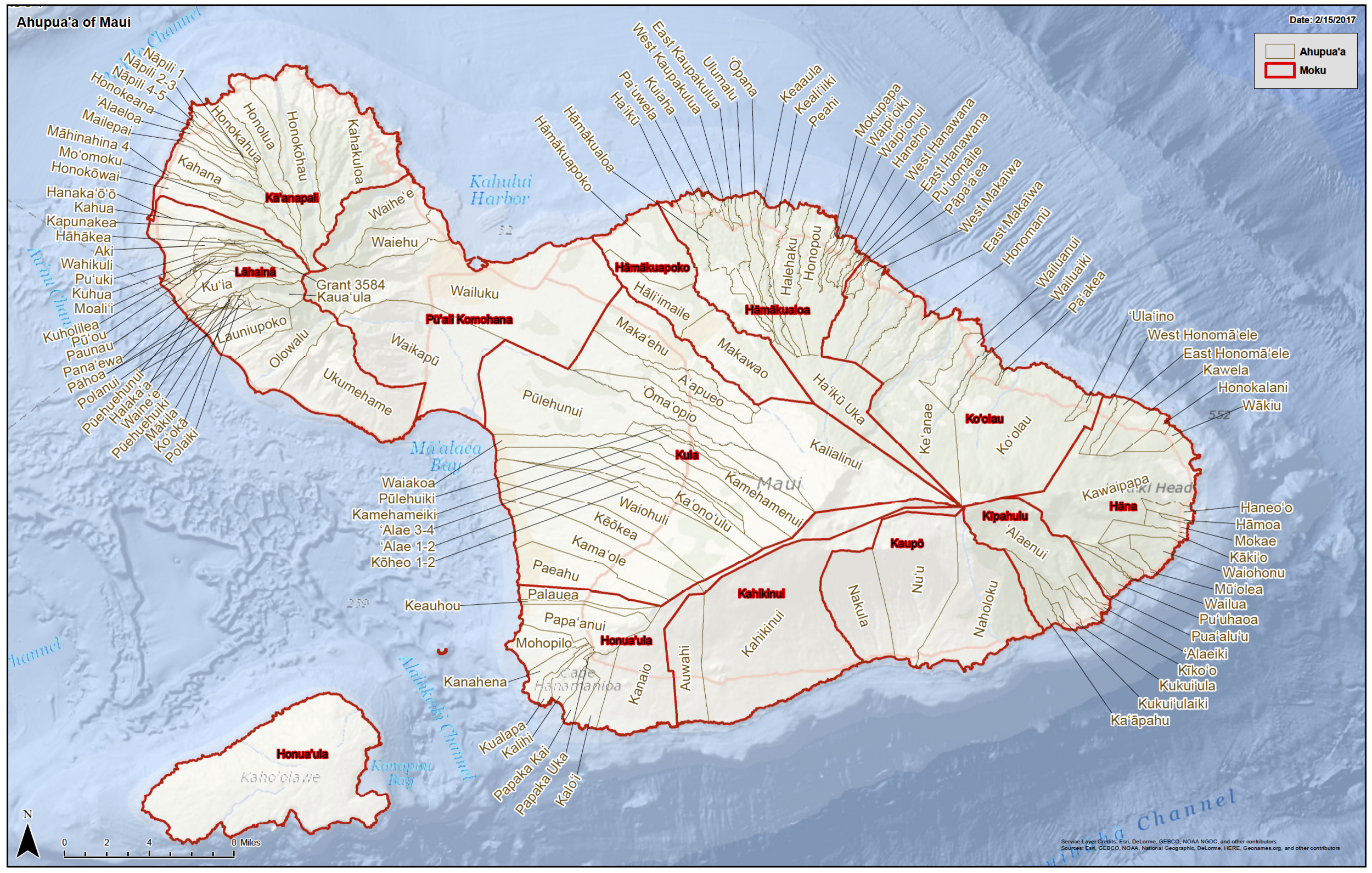
Mahalo for your manaʻo . . . Together we’re . . .
Preserving our island’s legacy
The Maui Nui Ahupua‘a Project is a collaborative signage program created to educate residents and visitors about Hawai‘i’s ancient land division system, their boundaries, stories and sense of place, and to encourage and support the concept of sustainability.
Project coordinator/designer Vernon Kalanikau has been working with community stakeholders, Hawaiian cultural practitioners, kumu and people from their respective ahupuaʻa to review land divisions, boundaries, and to gather moʻolelo (stories, legend, history) to help design signs for the ahupuaʻa on Maui.
The first ahupua‘a signage project, Kula Kai (Kihei area in the Moku ʻO Kula), was completed in October 2019. This was followed by the installation of signs in the Moku ʻO Wailuku (Central Maui area) starting in December 2020, and in Kula Kai (Upcountry area in the Moku ʻO Kula) beginning in September 2022.
Place names often reflect the intimate knowledge Hawaiians have of the weather, animals, plants, land features, historical events, beloved ancestors, and legends of their gods. When Westerners re-named land features in the islands, roughly 1,500 years of context and meaning were temporarily hidden from public view.
Those involved in the Maui Nui Ahupua‘a Project hope that by uncovering and sharing stories of these hidden cultural treasures, we can continue to preserve Hawaii’s roots and legacy for future generations. Mahalo to all who have participated in this collaborative process.
On the island of Maui, there are a total of 12 traditional land divisions or moku. Each moku was then divided into ahupuaʻa. Map from Wikimedia Commons, The Free Media Repository.
Map Source: Esri, GEBCO, NOAA, National Geographic, DeLorme, HERE, geonames.org, and other contributors.

